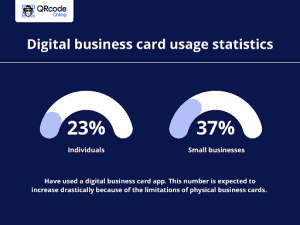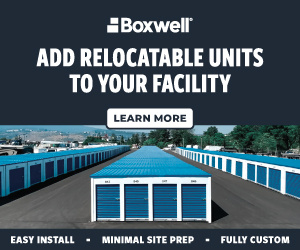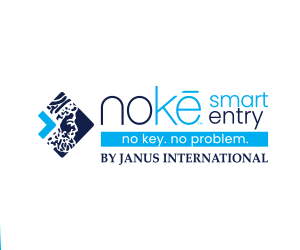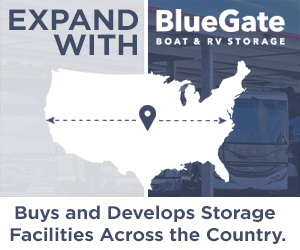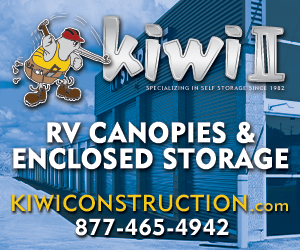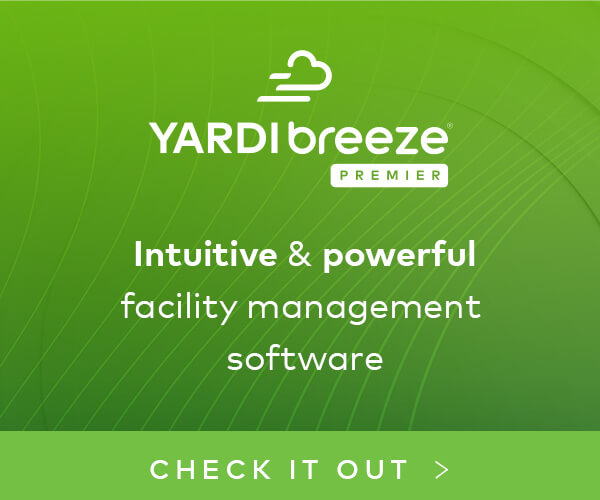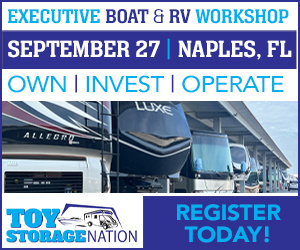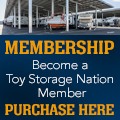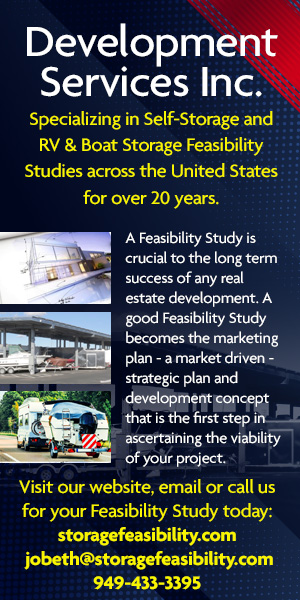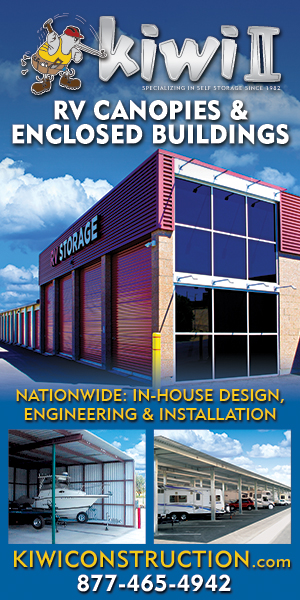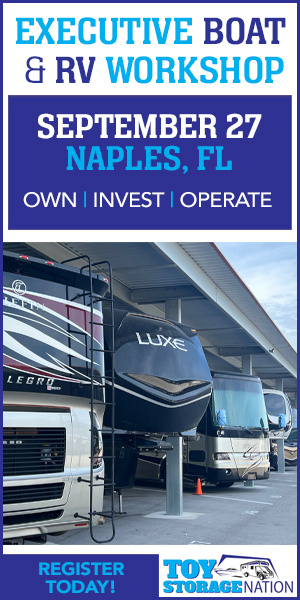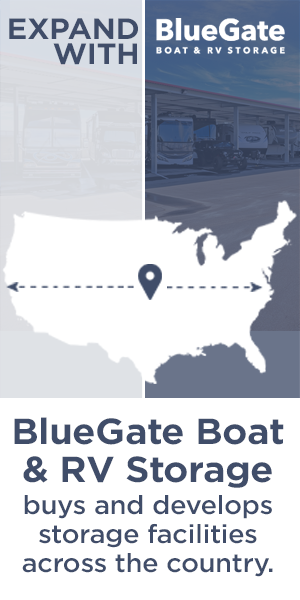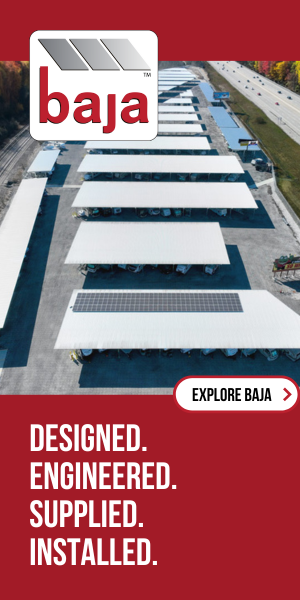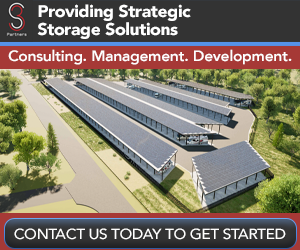By BusinessGuru.co
This is part two in a two-part series outlining 14 steps to developing a successful RV and boat storage facility. This concluding segment covers steps eight to 14, how to obtain business insurance, set up your office space, source equipment, establish brand assets, promote your site within your community, marketing strategies and customer service.
8. Get Business Insurance
Carrying proper business insurance is strongly advised when launching an RV storage operation. Policies protect your company’s financial health by covering losses from unforeseen events.
Without adequate coverage, scenarios like fire damage, customer injury lawsuits, or employee theft could severely harm or cripple your business. Rebuilding after a fire or paying large legal settlements from your pocket could lead to bankruptcy.
To avoid this, RV storage businesses need policies like:
- Property insurance covers buildings, structures, and contents. This protects against losses from fire, storms, vandalism, and more.
- Liability insurance covers injuries to customers or damage to their property while on your premises. This protects in case of lawsuits.
- Commercial auto coverage for company vehicles. This handles collisions, accidents, or cargo damage.
- Workers’ compensation for employee injuries on the job. This is required by law in most states.
- Umbrella insurance provides additional liability limits atop other policies. This adds another layer of financial protection.
The process for obtaining business insurance involves:
- Determining needed coverage types and desired limits. Consider worst-case loss scenarios.
- Getting quotes from providers like The Hartford and Progressive Commercial. Provide details on operations, property values, and number of employees.
- Choosing a policy with sufficient coverage at an affordable premium. Optimal deductibles reduce premiums while remaining within your means.
- Completing the application and providing all requested information to bind coverage.
- Paying policy premiums when billed to continue active coverage.
Working with an insurance agent or broker streamlines the process and ensures proper coverage. Protect your RV storage investment and peace of mind by securing adequate business insurance from the start.
9. Create an Office Space
Having a professional office space lends credibility and provides convenience for RV storage businesses when meeting clients or handling daily administrative tasks. The optimal setup depends on budget, location, and operations.
Home Office
A basic home office works well for sole owners doing administrative tasks like invoices and scheduling. Dedicate a quiet, private room only for work. Expect minimal costs like a desk and supplies, but distractions can be challenging. Meet clients elsewhere.
Coworking Office
Coworking spaces like WeWork offer affordable shared offices with amenities like meeting rooms, lounges, and coffee. These foster collaboration and provide turnkey offices. However, storage clients may prefer to meet at your facility. Expect to pay $200-$500 monthly for dedicated desks or private offices in coworking spaces.
Retail Office
Retail office spaces are ideal if also operating a companion RV supplies shop. Adjoining storage administration and the store provides convenience for customers. Office rent averages $15-$25 per square foot.
Commercial Office
For larger operations, Class B or C commercial office spaces near your storage lot offer room for staff and storage client meetings. Averages $10-$20 per square foot but allows room for growth. Location adjacent to your facility can enable easy access for clients.
10. Source Your Equipment
Launching an RV storage operation requires acquiring the necessary facilities, vehicles, and gear to provide secure, accessible storage. Entrepreneurs have options to buy new or used, rent, or lease much of the key equipment.
Buy New
Buying brand-new storage structures, buildings, paving equipment, or company vehicles provides modern amenities and features. However, it requires major capital outlays. New single-story steel storage units cost $50-$100 per square foot. Newer model trucks or utility vehicles for the facility run $25,000.
Buy Used
Purchasing good quality used equipment through sites like Craigslist, Facebook Marketplace, eBay, and auctions can yield major savings. Gently used steel storage units or RV carports cost 50% or more below new. Older model enclosed trailers for moving RVs run just a few thousand. Vet equipment thoroughly and factor in repair costs.
Renting
Renting equipment like bulldozers, excavators, or pavers for site grading and development avoids large purchase costs. Rental yards offer flexible rates from $100-$300 per day. Compare local outlets for the best selection and pricing.
Leasing
Leasing storage buildings, sheds, office trailers, or other major equipment is also an option to acquire essential assets without huge outlays. Typical lease terms run 12-48 months with buyout options. Monthly costs are often lower than financing purchases.
11. Establish Your Brand Assets
Creating a distinctive brand is key for RV storage businesses to stand out, build recognition, and connect with customers. Carefully crafting the brand identity and assets provides a solid foundation for marketing success.
Get a Business Phone Number
Having a dedicated business phone line lends legitimacy and convenience to customer communications. Services like RingCentral offer toll-free numbers, call routing, voicemail, and other professional features from $20-$60 per month.
Design a Logo
Designing a unique logo encapsulates the brand visually. Given the outdoor, adventure positioning of most RV storage, lively nature motifs or road trip imagery often work well. Services like Looka provide access to designers to create custom logos for around $150.
Print Business Cards
With a logo established, create matching letterhead, signage, website theme, and other assets. Consistent use of colors, fonts, and styling builds recognition. Order economical business cards, flyers, banners, and signs from Vistaprint. These serve as rolling ads.
Buy a Domain Name
Secure a domain name that matches your brand. Aim for yournameRVstorage.com or similar. Use name tips from Namecheap and budget $10-$15 annually.
Build a Website
Building a modern website quickly is achievable through user-friendly platforms like Wix. Pick sleek themes and highlight services, amenities, rates, and contact options upfront. Or hire web developers on Fiverr for custom sites from $500.
12. Join Associations and Groups
Tapping into local and industry organizations provides invaluable connections and knowledge for RV storage entrepreneurs. Surrounding yourself with peers and experts fuels growth.
Local Associations
Joining local associations like the Chamber of Commerce or growth alliances gives access to other business owners in your area. These groups enable networking opportunities and foster community relationships. For example, the Austin Independent Business Alliance connects over 400 local businesses through events and initiatives.
Local Meetups
Attending local storage industry meetups and trade shows allows connecting directly with fellow storage operators to share ideas and strategies. Sites like Meetup help find events near you. For example, the Self Storage Association of Michigan hosts regular chapter meetings across the state.
Facebook Groups
Facebook groups bring together specialized communities across distances. For storage pros, groups like RV/Boat Storage Investors and Self Storage Networking and Acquisitions enable asking questions, getting feedback, and discovering resources.
13. How to Market an RV Storage Business
Implementing an effective marketing strategy is essential for RV storage businesses to attract clients and drive growth. A mix of digital promotion, community networking, and customer referrals can build a thriving customer base.
Personal Networking
Start with your inner circle. Friends, family, and existing contacts are likely to become first customers. Offer discounts for referrals to incentivize happy patrons to spread the word.
Digital Marketing
Digital tactics should form the core of your marketing efforts for the best ROI.
Useful approaches include:
- Search ads on Google Ads to get found for local RV storage searches
- Facebook/Instagram ads targeted locally and to RV enthusiast interests
- An email newsletter with storage tips and company updates
- Search optimization to rank highly for local RV storage keywords
- Positive online reviews on Google, Facebook, and industry sites
- A YouTube channel with RV storage tips and facility walkthroughs
- Blogging about RV care, maintenance, and storage best practices
Traditional Marketing
Traditional promotion can supplement digital efforts:
- Printed flyers and direct mailers to nearby RV owners
- Signage and billboards on nearby roads
- Radio ads on local stations
- Sponsoring relevant podcasts or blogs
- Attending RV trade shows and meetups to network
While digital marketing enables targeted, measurable campaigns, traditional tactics help raise local awareness and visibility.
14. Focus on the Customer
Providing exceptional customer service is crucial for RV storage operators to earn loyalty, positive word-of-mouth, and referrals. In a competitive market, experience drives growth.
Some ways to improve customer focus in boat storage facilities include:
- Little touches like greeting customers by name, explaining all policies clearly, and educating them on proper RV maintenance make a difference.
- Take time to walk new clients through the facility to ensure comfort.
- Respond promptly to maintenance issues like broken gates or lighting outages.
- The security of customers’ valued possessions is on the line.
- Send periodic emails checking in on storage status or tips to care for RVs.
- Surprise repeat patrons occasionally with discounts or free months.
- Deliver superior service during stressful times like late payments or preparing RVs for long-term storage.
- The RV community is tightly knit. Satisfied clients share stories at campgrounds and dealerships, becoming your best advertisers.
- Disgruntled customers can likewise deter potential business if their needs aren’t met.
- Set yourself apart through a service that goes the extra mile.
- The goodwill generated brings rewards for your storage operation.
- According to surveys, over 80% of customers would refer after a positive experience versus just 20% with poor service.
It pays to make customer care a top priority. Your commitment keeps clients coming back year after year while sparking invaluable word-of-mouth. Service and storage go hand in hand.
Part one in this two-part series provides an overview of the RV and boat storage industry, due diligence, costs, establishing a legal entity, registering your business, setting up operations/accounting and obtaining licenses and permits. Click here for Part One.
Businessguru.com was founded by Ron Stefanski, a serial entrepreneur and college professor influenced heavily by his father’s relentless pursuit of his own businesses success. At the bold age of 18, he acquired his first business franchise. After earning an MBA, he masterminded a digital media company that swiftly scaled to a seven-figure profit. His reputation as a trusted figure in the entrepreneurial community speaks to his expertise, making him a go-to authority for those looking to bring their business dreams to life.










